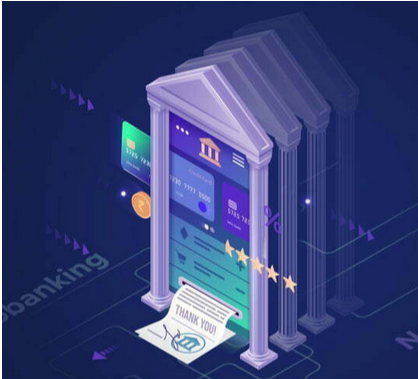This is when money matters deeply and transitions into its digital form. The old norms of going to the bank, waiting in line, or struggling with paper forms are gradually receding into the background. Rather, financial services are housed within our smartphones: on demand all the time, seamlessly designed, and customized. This does not merely upgrade technology but changes the definition of banking for the digital native, as seen with platforms like Kindgeek. Check their website — kindgeek.com — to see for yourself.
The Rise of Neobanks: A Digital-First Approach
Neobanks are at the heart of this financial evolution. These fully digital banks operate without physical branches, offering financial services through mobile apps or web platforms. Unlike traditional banks burdened by legacy systems and overhead costs, neobanks are nimble, scalable, and designed for a digitally native customer base.
What makes neobanks stand Out?
- Frictionless onboarding: Sign up within minutes using just your smartphone.
- Innovative interfaces: Clean, responsive apps that make tracking spending, saving, and investing easier.
- Cost-efficiency: Lower fees due to reduced infrastructure and automation.
- Global access: Most borderless services support multi-currency features and travel-friendly solutions.
While major players like Revolut, N26, and Monzo have gained global traction, new neo-banks are emerging around the world with niche focuses, serving freelancers, small businesses, crypto users, or underserved regions.
Fintech: The Engine Powering Modern Finance
Behind every successful neobank or financial app lies a robust fintech foundation. Fintech (financial technology) encapsulates software and digital solutions to streamline, enhance, and sometimes reinvent traditional financial services. From AI-driven credit scoring to real-time payment processing, fintech is the invisible engine of the modern financial experience.
Notable fintech solutions include:
- AI-powered customer support: Chatbots that resolve issues instantly.
- Open Banking APIs: Seamless integration of financial services across platforms.
- Blockchain-based ledgers: Offering secure, transparent, and fast cross-border transactions.
- Buy Now Pay Later (BNPL): Empower consumers with short-term, interest-free payment options.
One company enabling this transformation is Kindgeek, a full-cycle software development partner specializing in fintech. Based in Lviv, Ukraine, Kindgeek supports startups and enterprises in turning innovative ideas into scalable digital solutions. Their work with clients like Sileon, a Swedish fintech company focused on BNPL technology, illustrates how robust back-end architecture and a user-friendly interface can make flexible finance more accessible and secure.
Digital Transformation: Rethinking Financial Institutions
Digital transformation is not just about having a mobile app or website. It is about rethinking the delivery of value, the running of operations, and customer engagement — everything that traditional banks do after realizing the threat from neo-banks and fintech disruptors and placing hefty bets on digital transformation.
Key Components of Digital Transformation in Finance:
- Cloud Computing: Scalability, flexibility, and cost-efficiency.
- AI: Predictive analytics for fraud detection, credit scoring, and investment advice.
- Data Analytics: Customer behavior data to drive personalized offerings.
- Cybersecurity Frameworks: Crucial for building trust, as financial data is sensitive.
Deloitte says almost 70% of banking leaders placed digital transformation as their top strategic priority. This is reasonable enough because the young generation wants instant, mobile-first financial experiences. Old institutions have to step up, or else they will fade away.
The Role of User Experience (UX) in Financial Apps
As competition intensifies, the user experience has become a critical differentiator in fintech. Even with superior services, a poorly designed app will likely lose users. On the other hand, a seamless, intuitive experience drives engagement and loyalty.
Key aspects of excellent UX in finance:
- Simplicity: Clear navigation, clean design, and a minimal learning curve.
- Speed: Fast load times and real-time feedback.
- Transparency: Clear fee structures and straightforward language.
- Customization: Personalized dashboards, notifications, and services.
Kindgeek strongly emphasizes creating human-centered digital products. Their design philosophy focuses on functionality and emotional impact, helping users feel confident, in control, and secure while managing their finances. Their in-house design and business analysis teams ensure every product is both technically sound and user-friendly.
The Impact on Financial Inclusion
The most transformative aspect of digital banking is its potential to improve financial inclusion. In many parts of the world, traditional banking infrastructure does not reach them, is limited, or is entirely inaccessible. With just a smartphone and internet connectivity, millions will now be able to access savings accounts, credit, and insurance.
For instance:
- Mobile banking services like M-Pesa have empowered entire communities in Africa.
- Digital wallets are penetrating among the unbanked in Latin America.
- In Eastern Europe and Asia, neobanks are acquiring customers who have never had an earlier relationship with any physical bank.
This has been described as the democratization of finance, which is a cornerstone of the fintech revolution, closing these gaps and unlocking opportunities worldwide.
What the Future Holds
The lines between banks, tech companies, and e-commerce platforms will continue to blur. Embedded finance, where financial services are seamlessly integrated into non-financial platforms are already a reality. Think of paying in installments at checkout or receiving instant credit in a rideshare app. These capabilities are all powered by fintech.
Emerging trends include:
- Decentralized Finance (DeFi): Peer-to-peer financial systems built on blockchain, removing intermediaries.
- Voice banking: Managing accounts via intelligent assistants.
- Hyper-personalization: Real-time adaptation of products based on user data and behavior.
Companies like Kindgeek are not just reacting to these trends but shaping them. With a comprehensive portfolio that includes digital wallets, online banking platforms, crypto solutions, and payment systems, Kindgeek is a trusted partner for businesses navigating the ever-changing fintech landscape.
Conclusion:
The bank in your smartphone is more than a convenience; it’s the future of finance. As fintech innovation picks up and user expectations change, so will financial services’ proliferation, usability, and intuitiveness. Investments in stocks, mortgage applications, retirement planning-any service can be made out of the palm of your hand. Not only technological but cultural, this shift redefines trust, access, and the role of financial institutions in our daily lives.
Kindgeek and similar companies are driving this transition by building the tools and platforms that make digital finance work: securely, elegantly, and at scale. It’s a world of instant gratification, where the smartphone has become the vault, advisor, and branch. And that future? It’s already here.



